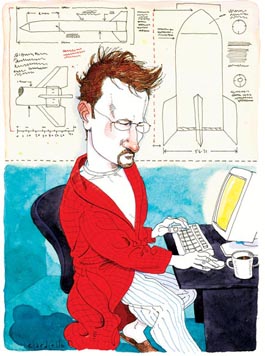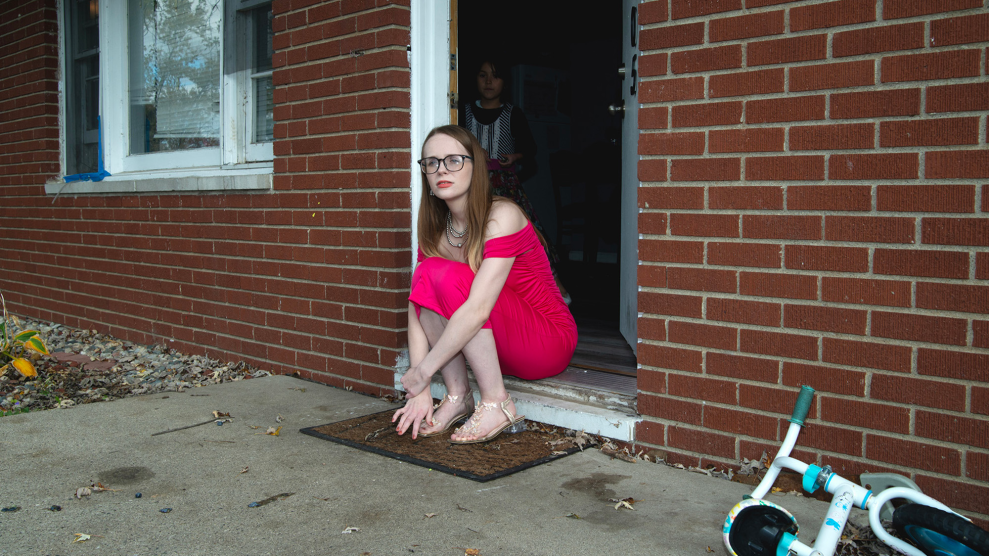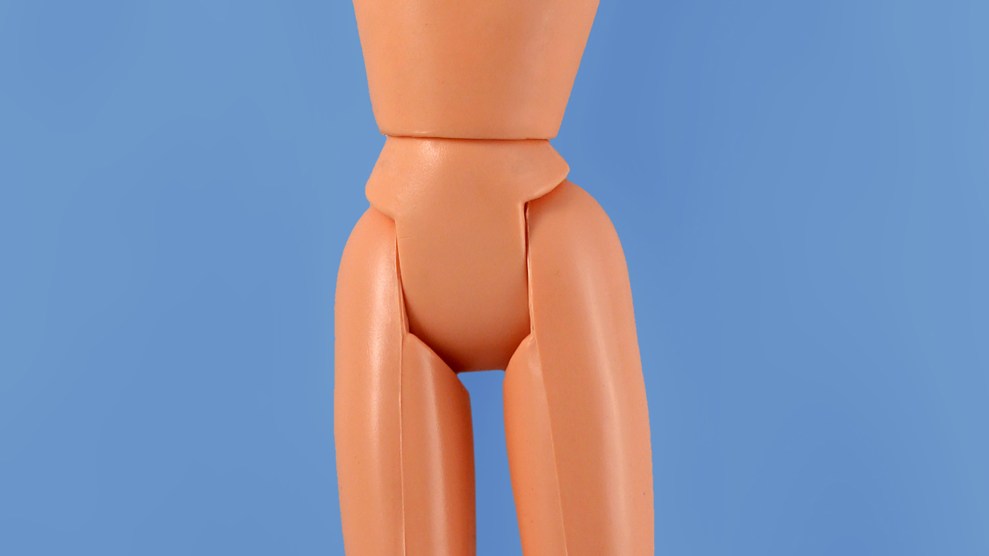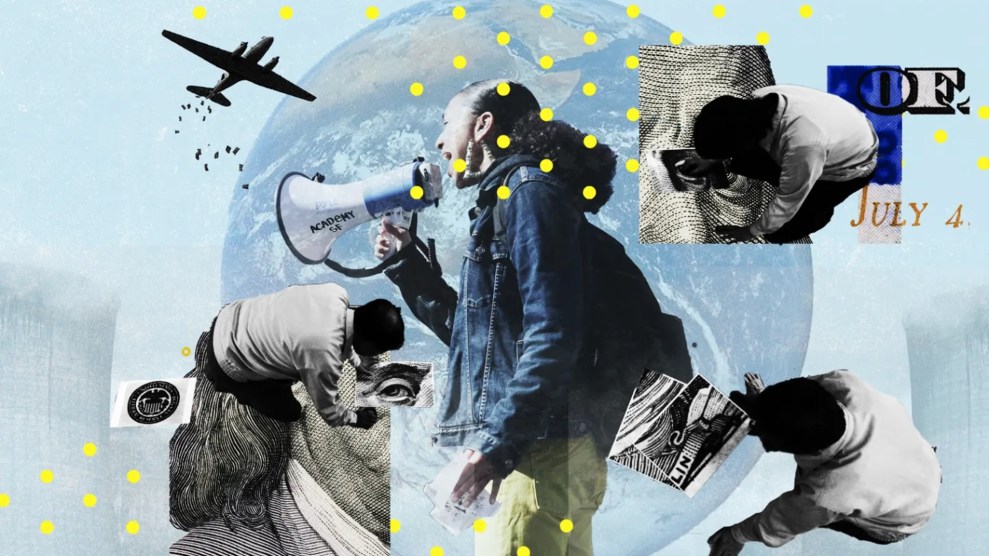
Illustration: Joe Ciardiello
it’s amateur hour in America. It’s not just the bloggers and the much-hyped “citizen reporters,” or the stay-at-home-dad podcasters and the prolific freelance book critics of Amazon.com. It’s the Mike Leighs of MySpace and YouTube, the homespun digital photographers who sell their work to photo agencies for next to nothing, T-shirt designers who are still in high school, ballpoint-pen doodlers who’ve become contemporary artists, and graphic design geniuses who spend their days entering online Photoshop contests. At the website of the diy tech magazine Make, enthusiasts post photos and videos of their MacGyver-esque inventions, such as a homemade rocket and a coffee table made from surplus jet parts and bombs. Once, Americans did projects like this alone in their garages and rec rooms and kept the results to themselves. Now they go online to brag every time their homemade tesla coil manages to give off a spark.
Getting beyond the surface of the amateur revolution requires going back to the meaning of the word “amateur” itself. Derived from the Latin amator, it means a lover or an admirer—or more precisely, a passionate dilettante.
The last great bloom of amateurism was in the 19th century, producing scientists and inventors such as George Eastman, a proud photographic amateur whose kitchen experiments ultimately yielded the company Kodak. But in the 20th century, amateurism lost its utopian sheen and acquired a negative connotation, implying lazy, sloppy dabbling. The rise of the century’s new professionalism, accompanied by specialist associations that saw amateurs as scourges, was partly responsible. Amateurs were driven out of various disciplines, from medicine to sociology. This was an overdue check on quack doctors and the like, but some of the anti-amateur sentiment was gratuitous, based on a view of untrained novices as unruly and a bit pathetic—which is why the word “amateurish” became a synonym for mediocrity and worse.
But the 21st century amateur has come out of the shadows to reclaim his once-proud status. Like prior efflorescences of amateurism, the current renaissance has been facilitated by a profound technological transition. Sure, you still need an advanced degree to build a skyscraper, but to be a successful architecture critic you need only high-speed Internet. Easy information-sharing has led to the birth of what Wired calls “crowd-sourcing”—a new pool of cheap labor in which ordinary people use their “spare cycles to create content, solve problems, even do corporate R & D,” also jargonized as “decentralized horizontal media,” “convergence culture,” or “commons-based peer production.”
But this is more than another tech evangelist tale. Mass media has become too small for all the energy possessed by the abundance of skilled people out there. The so-called average American may be less passive and more energetic than our cultural gatekeepers once thought. This is not a movement of elite amateurs but rather of nonelite amateurism. The new enthusiasts are flourishing in an era when the supposed professionals—politicians, pundits, weapons inspectors, emergency relief experts—seem to fail us at every turn. The incompetence of these experts has not only fueled the amateurs but has also, not coincidentally, become the amateurs’ target. No wonder so many Americans are relying on themselves and looking to one another as sources of information, entertainment, and assistance.
My favorite example is the flock of homegrown audio archivists who record books online. Their voices are all too human. They squeak. They stumble. In adenoidal tones they read from Joseph Conrad’s The Secret Agent and the Declaration of Independence. The readers are moms, retirees, activists—basically, anyone who likes the sound of his own voice enough to record it and upload it to the free audio literature site LibriVox. In the two years since it was founded, LibriVox has gained a “staff” of 1,250 volunteers and has had 25,000 downloads. “I feel we are contributing to the commons or the public domain and even the health of society by reading,” explains founder Hugh McGuire. “But there’s also the emotional attachment to the text that an amateur has that a professional does not.… Professionalism puts a limit on doing things. If there are 10,000 people interested in amateurs reading public domain text, that’s all the market we need.”
You can get stentorian Irish actor Brian Cox reading Dracula on Audible.com for $13.99, or you can get Kristin from New Hampshire reading The Heart of Darkness for free on LibriVox. Cox may have great diction, but who will remind you more of your mother’s voice?
Then there are the medical amateurs, who conduct their own research, attempt to heal themselves on their own, and even give birth by themselves. Devotees of the “unassisted birth movement” hold that newborns should be delivered by the mother herself, without a doctor or midwife or doula present. Laura Shanley, who runs unassistedchildbirth.com out of her home in Boulder, Colorado, explains, “Giving birth is like having sex—you don’t want a bunch of people around you when you do it. I know my own body better than the professional doctors know it. Women choosing unassisted birth are taking their lives into their own hands. People won’t save you; male doctors won’t save you. You can only save yourself.” Shanley’s sentiments echo the countercultural survivalists and the back-to-the-landers of the 1970s. But today, the antiestablishment impulse is coupled with a high-tech one. You need an Internet connection to learn how to cut your own umbilical cord.
Certainly, diy ob-gyn is amateurism at its most extreme. The majority of the millions of amateurs out there are not far-out obsessives, but rather what is known as “professional-amateurs.” These “pro-ams,” as Wikipedia describes them (at least for now), exist “within any endeavor that could be called professional, such as writing, sports, computer programming, music, film, etc.,” smudging the distinction between expert and novice. First identified in Charles Leadbeater and Paul Miller’s 2004 essay “The Pro-Am Revolution: How enthusiasts are changing our economy and society,” this new breed pursues “amateur activities to professional standards” and has redefined leisure as “not passive consumerism but active and participatory.” Wired editor Chris Anderson champions these raw and underpaid creatures in his recent book The Long Tail, emphasizing that today’s amateur is paradoxically not amateurish at all but actually highly skilled.
A good example is Bre Pettis, Make magazine’s video podcaster. Once, the 34-year-old Pettis worked as a teacher and went home to build curious contraptions in isolation. Now he’s paid to teach others, via digital video, how to make steam-powered bicycles and take high-speed photographs of falling water droplets. “Amateurism is about reclaiming hardware, about mastering your surroundings,” he says. Pettis may have reclaimed, mastered, and unleashed his inner mad scientist, but like many a pro-am, he’s also making a living doing it.
Even if making money is a happy result of one’s hobbies, many amateurs are ambivalent about the idea of joining the ranks of the careerists. Ron Hogan, one of New York City’s thousands of pro-ams, gets remunerated for his publishing blog, GalleyCat.com, while toiling on his own website, Beatrice.com, for no pay. “When I was a pure amateur, I didn’t have a problem with the term,” he says. “It meant to me, ‘Not getting a paycheck.’ That’s all.” For him, professionalism implies an uneven playing field, enforced by capital-J journalists who, as he puts it, possess an “ironclad defensiveness about who gets entry into professional institutions.”
but the amateur aesthetic has become a very desirable commodity, and the pros are increasingly embracing the unschooled outsiders, albeit on their own terms. Superprofessional rock stars such as Beck and the band Interpol emulate godheads of amateurism such as Daniel Johnston, the brilliant manic-depressive Texan songwriter and musician who lives with his mother. Photographer and filmmaker Larry Clark now posts his photos higgledy-piggledy on gallery walls while lesser-known pseudo-amateurs have turned scribbling and Post-it notes into a style that could be labeled “Early Homeroom.” Last June, a 20-year-old YouTuber named Brooke “Brookers” Brodack won an 18-month programming deal with former mtv host Carson Daly. “Her directing, her use of music—it was very mtv to me,” remarked Daly. Even a few journalists are letting the barbarians of Blogistan through the gates. The nyu Journalism School is rolling out “New Assignment,” a project that aims to create a professional-amateur hybrid, encouraging experienced and novice writers “to cooperate to produce work that neither could manage alone” by generating story ideas together—before turning them over to professional writers.
Unsurprisingly, advertising agencies also want their 30-second spot in the sun. Ogilvy & Mather has been posting homemade-looking videos for Foster’s beer on the laddish Heavy.com. The ads are rough-hewn by design, to mask the fact that they’re commercials. It’s a technique already advanced by Wal-Mart and McDonald’s, which a year and a half ago created a blog purporting to be dedicated to a french fry that resembled Abraham Lincoln. More recently, a photographer and a cinematographer I know were recruited to channel their years of training and professional experience into shooting ad campaigns in the style of a teenager with a digital camera.
Meanwhile, the tatty amateurs are serving the shiny professionals. Nikon sent a bunch of its new D80 cameras to users of the photo-sharing site Flickr and published the best submissions in a three-page advertising spread. During this year’s Super Bowl, Frito-Lay, Chevrolet, and the nfl will unveil commercials made by the winners of diy ad contests. Though the spots might have been made on thrift-store budgets, to quote Dolly Parton, it takes a lot of money to look this cheap.
In the past year there’s been a rash of fake amateurs such as LonelyGirl15, the YouTube star who filmed confessional bedroom monologues about her teenage Christian life. She infamously turned out to be a 19-year-old actress who came complete with a director and a writer. Before that was Al Gore’s Penguin Army, another YouTube short in which an animated former vice president lectured penguins about the link between Lindsay Lohan’s eating disorder and global warming. While the video’s creator was listed as an anonymous 29-year-old, the Wall Street Journal traced the video back to the dci Group, a Washington, D.C., public relations and lobbying firm that represents none other than ExxonMobil.
So far, the professionals in sheepish amateurs’ clothing have yet to impress the people they’re trying to imitate. “If you are just pretending to be an authentic amateur, it will bite you in the butt,” says Make‘s Pettis. Hogan agrees that the wanna-bes’ counterfeit amateurism can seem, well, amateurish. “I picked up very quickly that the Al Gore film was too slick to be someone’s iMovie job,” he says. “With the LonelyGirl, the professionals faking the amateur thing, people will be unhappy. No one likes to be lied to.” Still, the jury is out as to whether LonelyGirl actually crashed and burned. The stunt got her creators publicity without terrible backlash. And, in a bizarre twist, LonelyGirl herself wound up getting hired for a United Nations antipoverty ad campaign that is broadcast, of course, on YouTube.
What will become of all this hipster craftiness and pastime culture as it goes legit? I can’t help but think that the new amateurism runs the risk of going the way of the label “organic,” an honorable appellation that the very mainstream that epitomizes its opposite will attempt to claim, and, in so doing, corrupt. There’s already plenty of money to be made off amateurism, as illustrated by Google’s purchase of YouTube for $1.65 billion in October. As dilettantism accrues market value, the once clean line between obscure dabblers and market-savvy pros will further blur, and not always to the amateurs’ advantage. Amateurism may be drained of its core appeal—authenticity—by companies and celebrities wishing to cash in on the uncooked, the untrained, and the unpaid.
It remains to be seen what will come of our amateur republic. Will the lion’s share of new ads be broadcast via videoblog, seller and buyer fused into one? Will tomorrow’s women deliver their children at home, guided by online how-to videos? Will an amateur hoisted on his own homemade rocket walk on the moon? And will he be sponsored by a lobbying firm?















